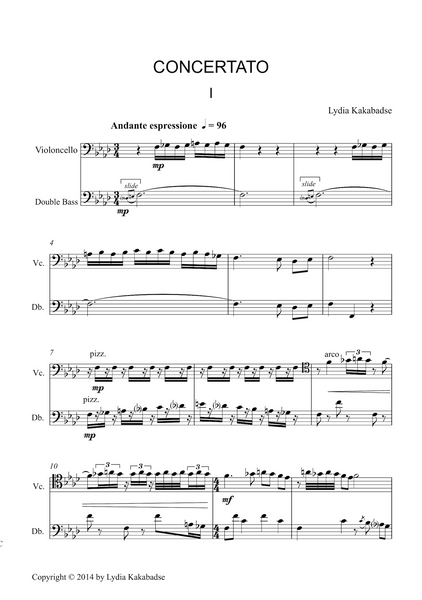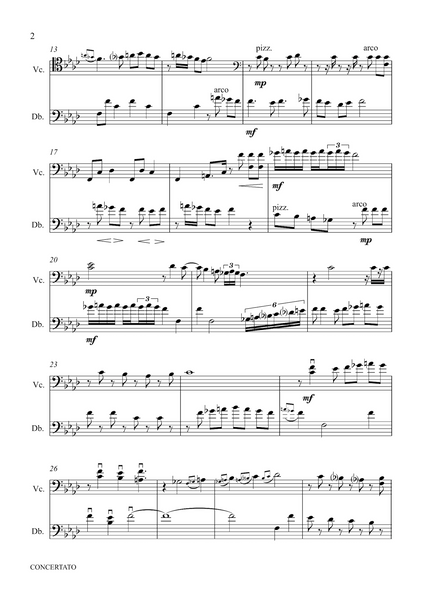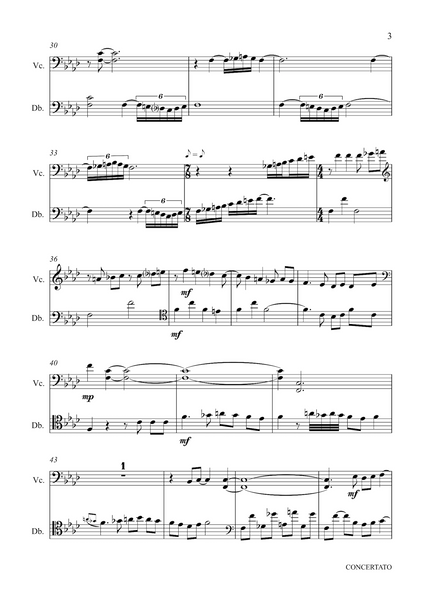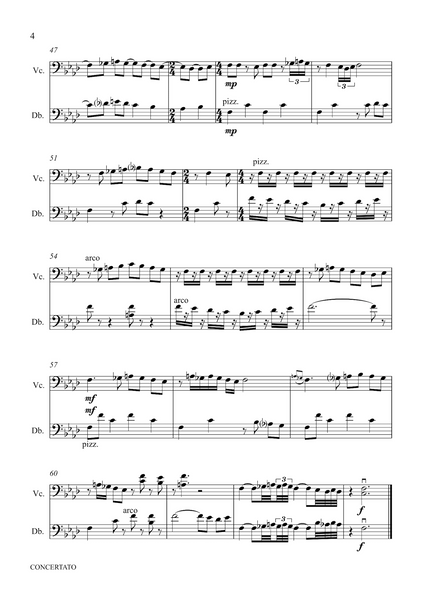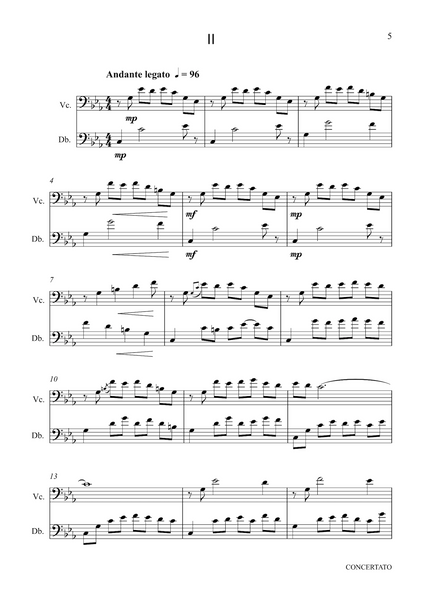Lydia Kakabadse: Concertato – for cello and double bass (NXP081)
This is a sheet music edition of Concertato by the composer Lydia Kakabadse.
Sheet music for cello and double bass
Duration: ca. 11 1/2 minutes
Score: 18 pages
Parts: 16 pages
Preface and Programme Notes
Originating from the Latin concertare meaning “to fight” or “contend with”, the term concertato was sometimes used in early Baroque music, involving rivalry or contrast between groups of singers/players. Completed in 2014, Concertato is a duet in 4 movements for double bass and cello. The work presents a challenge to both instruments with its use of double-stopping, fast runs, syncopated rhythms, double harmonic minor scale and frequent accidentals and embellishments. There are also awkward intervals, especially for the bass. Rather than there being a master-servant relationship, each instrument contrasts and vies with the other.
First movement
After a short introduction where the double harmonic scale of F minor makes its first appearance in a pizzicato run by the bass, the cello announces the main theme, which is later taken up by the bass. A distinctive trait of this movement is the frequent imitative interplay between the instruments in respect of trills, fast runs and syncopated rhythms as well as high register playing and frequent shifts from arco to pizzicato.
Second movement
Played andante legato and remaining in C minor throughout, this movement is characterized by arpeggio like sequences alternating between the instruments. The cello and bass play together in intervals of 3rds and 6ths and when the bass embarks on octave leaps by means of an acciaccatura to the principal note, the cello continues the arpeggio like runs. As the bass initiates a smooth transition into jazz, the cello responds with syncopated rhythms and double-stopping, whilst maintaining legato phrasing. The bass reintroduces the same octave leaps to a very different effect and brings the movement to a pizzicato piano close.
Third movement
The main theme, in syncopated rhythm, alternates between the 2 instruments at different octave pitches. This is followed by arpeggio-like passages on the bass against the cello’s sustained double-stopping in intervals of 3rds, 5ths and 6ths. A slower tempo ensues played in a rich and heavy manner, characterized by much double-stopping on the cello and, to a lesser extent, on the bass.
Fourth movement
Opening with fast semi-quaver pizzicato runs by the bass in the double harmonic scale ofC minor, this movement builds on the melodic theme of the 1st movement, the legato and jazz style of the 2nd as well as the heavy, syncopated rhythms of the 3rd movement. It also introduces a new rhythmic pattern made up of a quaver and 3 triplet semiquavers, each note an augmented 2nd apart. The bass challenges the cello to fast runs and the cello responds with fast, florid and highly embellished passages. Following a sequence of syncopated rhythms, both instruments bring the piece to a mezzo forte close.







